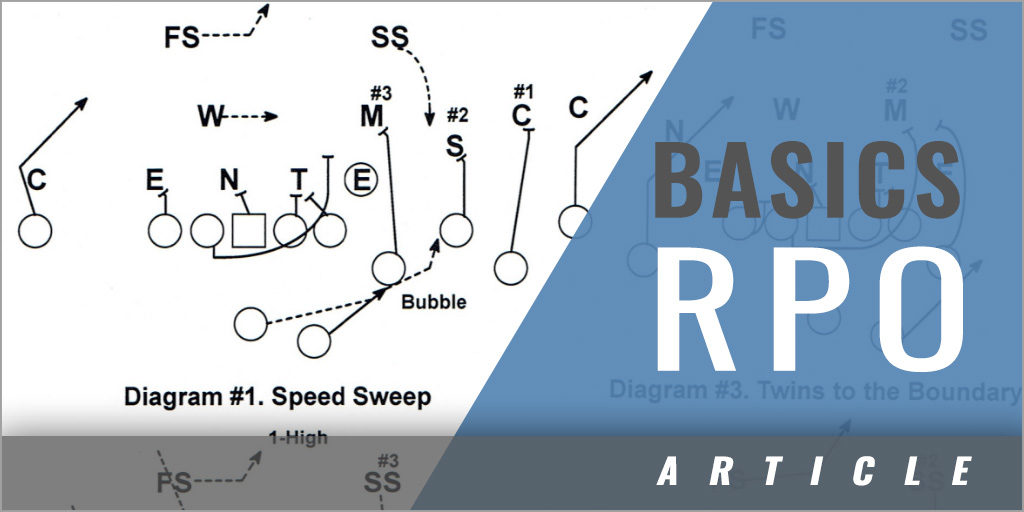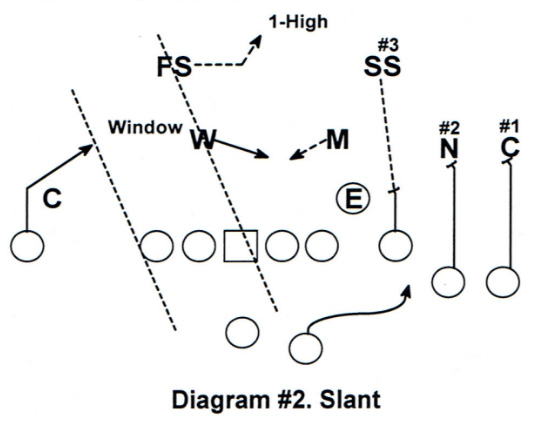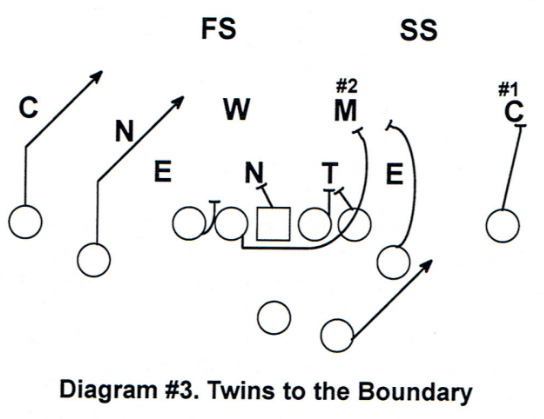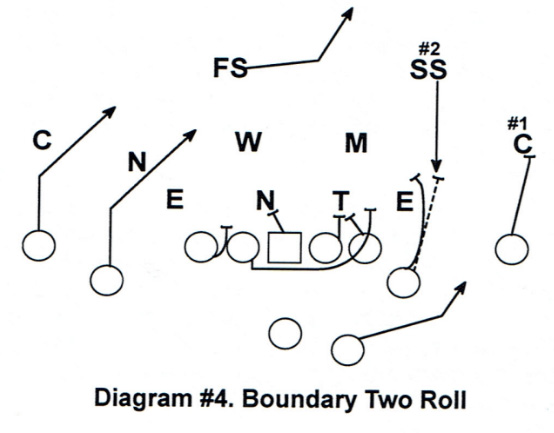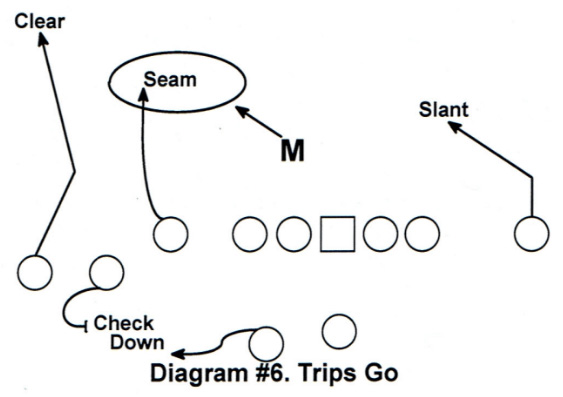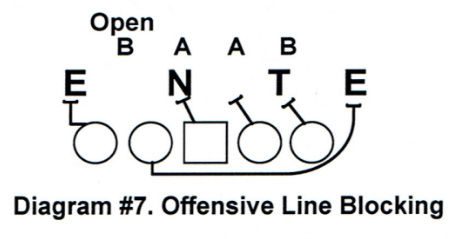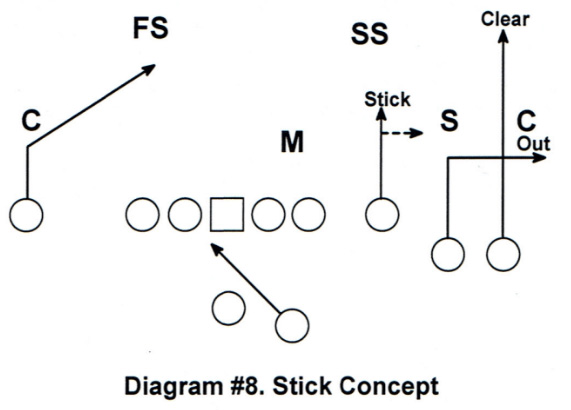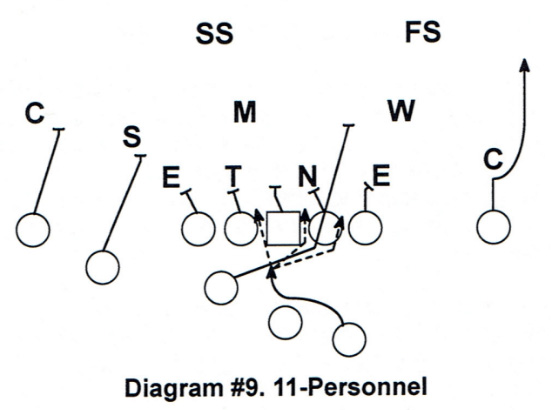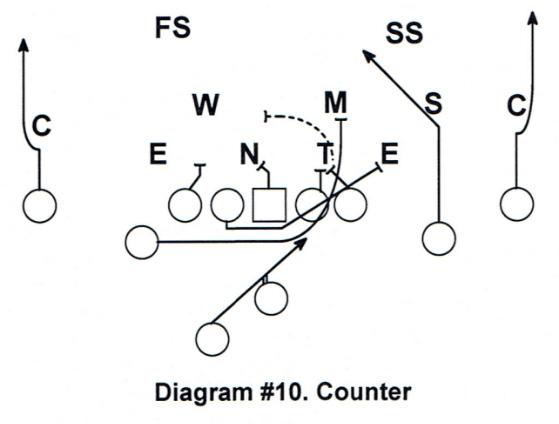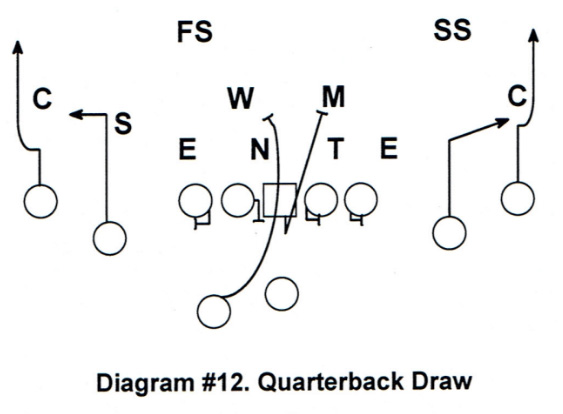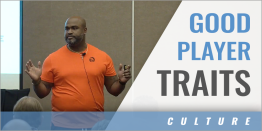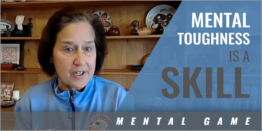|
By: Matt Luke - University of Mississippi Thank you. It is good to be here today. When I got the job as interim head coach at Mississippi, I wanted advice as to what I should do. I went to all the coaches that I worked for, Coach Cutcliffe in particular, and asked them what I should do. I asked them what I needed to do to be a head coach. How do I have to act or do I need to be different? What do I need to say, and basically I wanted to know what I needed to do to be a head coach. They all said one thing that stuck with me. They told me to be myself. One thing a team can tell if you try to act a certain way is whether you are sincere. If you try to act as you think a head coach should act, they will see right through that. However, if you be yourself, good things will happen. When I stood in front of the team, I could not act like Huge Freeze or David Cutcliffe. You have to be yourself. That is the one thing I want to get across to you coaches in here today. If you be yourself and are genuine, the kids will respect you. They already know who you are and can see through any attempt to be someone else. If the coach tries to B.S. his way through certain things, the team can tell that. Be Yourself
That is the number one thing I want to get across to you guys. Be yourself. I played a video for our team that was perfect for the situation we found ourselves in and the way we were going through things. Our players bought into it. There is a guy on podcast by the name of "Jocko", who does inspirational videos. This was one of those videos. If you want to use some of his stuff, you can look him up as simply "Jocko." You can find this one and many more. The main points behind the video was when things are going bad, you can get some good from it." Bad things gives you the opportunity to make something good happen. If you did not get the job you wanted or sprained your ankle, I say "good." When things are going bad, there is going to be some good comes from it. It gives you the chance to get better. When things are going bad do not be bummed out, down, or frustrated. If you can say the word "good", it makes you stay alive. You have to fight. Get up, dust off, reload, recalibrate, reengage and go out on the attack. That was the message we wanted to get over to our team. The video is well done and carries that message. You just look at the issues and you say...
Do not always consider a problem or
When I first took over the team at Mississippi, I knew that I could not shelter them from all the negativity whirling around our program. They were hearing about "no bowl game" and all the other garbage that was being said. They all have cellphones. What I did know is we could not run and hide from it. We could take that and use it for motivation. We worked under the assumption that good can come out of any situation. If you have not gone through something that is tough, you will at some time in your program. Anyone can be great when things are going good. However, when times are tough is when you have to step up There were a bunch of times I thought I should have been promoted to offensive coordinator. When I did not, it made me better. I interviewed for the Troy job two years ago and did not get it. Well guess what, I am now the head coach at Ole Miss. We had a lot of unexpected problems, but we make the best out of it. I have been part of teams with better records than we had this year. I have been part of teams that won the Sugar Bowl and Cotton Bowl. I have been part of teams that were successful, but I have never been a part of a season that was more rewarding than this Ole Miss team this year. Another part of my motivational program comes from Admiral William Mcraven. He was a Navy Seal instructor. He gave an inspirational address to the University of Texas which was quite motivational and impressive. I use some of these as principles during the week. If you want to change the world:
The first thing the Navy Seal does in the morning is make his bed. The thought behind that is they have completed the first task of the day. The day continues and the tasks continue. I am not going through all the thoughts but I think each one is important. I believe in the culture of the locker room. The motivation and team unity is way more important than any offense you run, I believe this is why we ended our season better than we were at the beginning. One of the big things from this list is being the very best at the darkest moment. If you are a coach, this is when you need to be your very best. A good example of that happened to me when I coached at Tennessee. Phil Fulmer was the head coach in 2007 and we had just been beaten 56-20 by Florida in the Swamp. In those years whoever won the Tennessee-Florida game usually won the eastern division of the SEC. Everyone around the program thought the coaching staff was getting fired. The coaching meeting that followed that game was the best meeting I have been a part of. Phil Fulmer was a leader who was at his best when everyone around him was at their worst. The following week we beat Georgia 55-21, won the SEC east, and played LSU in the league championship game. The head coach has to remain calm when everyone around him is losing their composure. That allows him to make good decisions. Start singing when you are up to your neck in mud. That comes from Navy Seal training. The Navy put the Seals into frigid water up to their necks in mud. The water was cold and the situation was horrible. They made them stay their overnight. If one Seal got out and rang the bell, then they all would get out. Ringing the bell signaled that the Seal had quit the program. At one point or another all of them considered whether it was worth it and wanted to ring the bell. One of the Seals started to sing. It was a bad song and off tune. However, a second later a second Seal started to join in the singing. It spread among the group and they all were singing. While they sang, they were not thinking about being cold, muddy, and tired. They were just singing. My players like that. In tough times if the players stick together as one they can overcome the problem. Another principle we try to install in our players is the idea that "you do not have to be blood to be family." I am a big proponent of that. I think culture in the locker room is huge. I felt like at the college level we split offense and defense way too much. You have the offense over at one place and the defense at the other side of the field. To me it is all about team. We started doing more drills where the starting right tackle was going against the backup right tackle instead of the starting defensive end. All I was looking for was the defense cheering for the offense at times. I do not like the offense on one side and the defense on the other. The red shirts in one area and the blue shirts in another area. I want them to mix with one another. This all comes back to being yourself. If you are yourself, are transparent with your players, and are straight up with them, they will play for you. Do not sugarcoat it or tell them what they want to hear. Be yourself, hold them accountable, and you can create the family atmosphere within the team. Another thing we do that is important to me occurs on Sunday. We have a family dinner for the team. After we finish practice we gather for dinner. The wives and children are there. When my players interact with my wife and two boys, I think that is important. I think this is being more than just a coach to them. They need to know it is okay for a man to hug a son. In high school you could possibly do it Thursday nights. I recommend you try to build that type of atmosphere into your program. I am going to get off my soapbox and talk about RPO's, but I think this is tremendously important. I am standing here today living out my dream so everything is possible. My topic today is RPO's. I grew up running power right and left and isolation right and left. That is my background and that is what we did. In 2007 at Tennessee, we went to a no huddle and started to throw some bubble screens. That was a big deal to us. However, it was not until 2012 when I came to Ole Miss that we got into tempo. Every decision we made was trying to go faster. The RPO's allowed the offense to play faster because the quarterback (theoretically) had answers built in for the running game. The quarterback did not have to "check-with-me" or "count the box." That allowed us to go faster. Instead of checking to the quick game it was built in. When we started out we read the defensive ends. Now we are blocking the defensive end and reading linebackers. We have progressed to the point where we are reading some safeties. This scheme has been a progression. I want you coaches to get something out of this. At any time, if you have a question, raise your hand, and I will stop and try to answer the question. Have Your Options Built In
There are a lot of different things you can do. Starting with the bubble screen we usually throw it to the trips side of the formation. We run a hitch pattern that converts to a fade versus a press technique. We have slants built in to our running game. The hitch and slant can both convert to fade routes. The 3-route is the speed out pattern. From the passes we have the handoff on the inside zone or quarterback keep off the inside zone. Everyone wants to know about the reads in the RPO game. I will show you the reads off the power read. (Diagram #1) We like the trips set into the field with the single receiver into the boundary. We have the ability to run the inside zone to the boundary from this set. The running back is offset into the trips side of the formation.
The outside receiver is blocking number-1 or the defender closest to the sideline. The slot has the number-2 defender and the inside slot (tight end) has the number-3 defender from the sideline. Our goal is to get the running back one-on-one with the half field safety. If you play against teams that spill the running game by coming under blocks that gives the running back a short edge. That is what we are looking to get. The quarterback sprints toward the running back who is running a flare route to the outside. The quarterback reads the action of the defensive end. He uses an option pitch to get the ball to the running back. If the end pinches or stays static he pitches the ball to the running back. The play is designed to get the running back to the half field safety. The safeties depth is probably 10-12 yards deep. If the safety makes the tackle we should have no less than a four yard gain. To the backside, we run a slant. (Diagram #2) The key for this is the free safety. If the defense tries to roll the strong safety down to the box and overload the sweep, we throw the backside slant. To roll the strong safety down the defense has to commit to a one high safety. With the action of the tailback going to the trips side, the backside linebacker will fast flow opening the window behind him for the slant.
The backside slant built into the power read helps the play. On the snap of the ball, the quarterback reads the strong safety. If he stays high in a two safety look we run the speed sweep. If the strong safety rotates down and the free safety gets into a one high look, we throw the slant. The offensive line blocks a power blocking gap scheme. We want to double team the 3-technique defender and stay on the double team. We are not worried about the Mike linebacker. The backside guard pulls and comes around the double team. He is not blocking for the speed sweep back. He is blocking for the quarterback if he keeps the ball on the quarterback keep. The pulling guard blocks anything that comes over the top of the double team. It could be the backside linebacker or Mike linebacker. It is a simple play which can go fast. You read the safeties and run the slant verses one high and the power sweep verses two high. There are a couple of good passes that go with this scheme. The backside guard uses a skip pull as he pulls. He may have to insert at any time during the play. He cannot do that unless his shoulder are parallel to the line of scrimmage. He is looking for run-throughs by the linebackers. If the end closes to the inside, he goes around the pinching end and seals inside. If the safety starts to make plays on the running back at four yards or less, the play action pass is coming. If the safety is getting nosy and wants to make the tackle, we are going to take a shot deep. The inside slot has to decide who the number-3 defender is going to be. In most cases, it is the inside linebacker assigned the coverage on the inside slot. However, if the strong safety rolls down, he becomes the number-3 defender. That leaves the Mike linebacker unblocked. However, if the quarterback makes the correct read, with the safety rolled down, he has a one high look. That means he throws the ball to the slant. When the quarterback throws the slant, he is not worried about the backside linebacker intercepting the ball. The backside guards pull generally pulls the backside linebacker to the puller's side. That opens the window for the split end running the slant. The secret to running the slant is to have a receiver that can beat one-on-one coverage. We have been fortunate to have receivers that can do that. This type of blocking scheme does not allow linemen the time to get down field before the ball is thrown. We have a double team and a pulling guard in the scheme. The pass occurs before the linemen have a chance to get down field. It is not like the inside zone where linemen may get down field before the ball is thrown. The backside tackle's block is to seal the B-gap. If we are having a problem with the backside defensive end crashing down inside we adjust the offensive tackle's block. The coaching point is to widen the split of the backside tackle and block the defensive end. That gives up the B-gap. The thing that people do not like about the RPO is it puts all the pressure on the quarterback to make the correct read. This read is simple. I like to put the formation into the sideline and see how the defense adjusts to the field side. (Diagram #3) With this set we have two receivers into the boundary with a single receiver into the field. We play the tight end in a tight wing off the offensive tackle. This makes the defense make some tough decisions as how to handle the single receiver. If we run the power read to the field to the backside we have two receivers. They both run slant patterns. There is no thinking. We are trying to make it simple where there is no thinking.
When you play fast, you cannot give the players too much to think about. To the power read side, the wide receiver blocks the number-1 defender and the tight slot blocks the number-2 defender. The quarterback reads the one or two high look by the safeties. If there are two safeties we run the power read. If they roll the safety down to the field side we throw the double slant to the backside of the formation. (Diagram #4) The slot back has the rolled up safety as the number-2 defender. The Mike linebacker is unblocked. The quarterback reads the single high safety and throws the double slant.
When the safety starts to come down and make the tackle, we go to one of my favorite plays. Our coach in the box will tell us when that is happening. (Diagram #5) In a 2 X 2 set we start the receivers on a stalk block track. The safety reads the running play and starts up. We blow the slot receiver past his blocking assignments and behind the safety. It is the same action by the running back. The quarterback fakes the pitch, sets up, and throws the deep ball.
The pulling guard does not wrap the double team. He becomes the personal protector against the defensive containment. For the play to be effective, it has to look and sound like the running play. That means the double team has to sound like a run block. This is not an RPO play. It is a called play action pass. We feel we have an advantage and go deep. We normally fake the block before going deep. When we played Alabama we felt if we faked the block they would recover. We simply ran a go pattern past the flat defender and safety. We run the same play from the trips set into the field. (Diagram #6) The good thing about running RPO's is you do not have to drop back pass block. You get to pass the ball and not have to pass block. I am an offensive line coach and that helps tremendously. I want the ball to come out quickly. We are not going to hold the ball. To the trips side, the outside receiver runs a clear-out fade to take the top off the coverage. The inside slot receiver is the receiver we are looking to throw the ball. He is working on the Mike linebacker up the seam. He has from the hash marks inside to work on the Mike linebacker. The slot receiver is the hold off receiver. He is holding a defender.
On the backside of the pattern we have the same slant by the single receiver. The blocking assignments for the offensive line are simple. (Diagram #7) The backside tackle jump sets on the backside defensive end. He gives up the B-gap. The center has the backside A-gap. The playside guard blocks the playside A-gap. The playside tackle has the playside B-gap. The pulling guard pulls and has the first man off the playside tackle's butt.
If the quarterback reads the secondary as a two high look, his focus goes to the Mike linebacker. If the Mike linebacker is out of the box, he knows he has the inside slot receiver down the middle. That is particularly true if the linebacker stays in the box. If we get press coverage on any receiver, we convert the pattern to a fade pattern immediately. The secret to the play is to keep it simple and not to make it complicated. The next thing we go to is the "zone lock scheme with the RPO." We run this from the same formation as we ran the power read play. We are going to zone block the play side of the play. To the backside we are going to use a lock scheme with the offensive tackle locking on the outside defender. The trips side is running a stick concept and the single receiver side run his one-high beater pattern as he did in the power read. (Diagram #8) The stick concept has the outside receiver running a clear-our pattern. The number-2 receiver runs a 3-pattern and the number-3 receiver runs the stick pattern off his defender.
The quarterback read has to determine whether the defense is one high or two high. If the Mike linebacker left the box, we ran the inside zone play and handed the ball to the running back. If the Mike linebacker stayed in the box, we ran the stick concept to the three receiver side. With the Mike linebacker out of the box, we ran the inside zone play. Even if we do not block it well, we still had five-on-five and someone had to tackle the running back. This offense allows the linemen as they become more experienced to adjust their splits to gain an advantage. They understand the play and can widen their splits to take an advantage of the defense. If the blocker does not have a combo block and is blocking by himself, he can make the hole wider by adjusting his split. That gives the defender more space to cover. We do not allow the defense to play three over two in a trips set. If they match up on the inside slot, we throw to the outside slot. For the defense to stop the play they must play three over three to the trips side. We can game plan the patterns to give us answers to defensive adjustments. Instead of a stick pattern inside we can run hitch combinations with the receivers. If the defense wants to call an automatic blitz, the linebacker has to communicate with the safety and the down linemen. They have to look at the formation and the depth of the running back and communicate that throughout the defense. They do not have time to do that. They have to predetermine the blitz or play base defense. We like it when the defense plays base. Our automatic calls are based on what we are trying to do. A B-word indicates we are going to read the second level defender and are blocking the backside of the inside zone with a base blocking scheme. If we were reading a third level defender we would have a C-word as the action key. We do not have a guard pull on the inside zone lock. That means there is nothing to entice the backside linebacker to move. The ball thrown on the backside slant has to be accurate. The backside linebacker could make a play on a misthrow. If you are a true spread team and want to install this offense, the lock and power read are good places to start. The power zone and the inside zone look exactly the same. If you want to be a tempo or RPO team that is a good start for you. This is a great start if you want to try to run this offense and tempo. With these two plays, the offensive line does not have to make line calls to run the offense. It may not be the perfect call. but it has an answer for what the defense is doing. When we go to our 11-personnel package, we have a fullback in the game. We are in a twins set to one side a single receiver to the other. (Diagram #9) We still lock the backside with the down linemen. The fullback goes through the tackle's block to block the backside linebacker. He can go inside or outside the tackle's block depending on where the defensive end tries to go. It is the same blocking scheme for the offensive line except the fullback is going to insert on the backside linebacker.
We can use simple tags to the plays to give us a single pattern change. This puts more on the quarterback, but generally he can handle it. The standard rule for the quarterback is whenever he is in doubt, hand the ball off. If the read is cloudy hand the ball to the running back. However, if he can read one-high safety, throw to the split receiver. I like the twins set into the boundary with the single receiver into the wide side. This is particularly good with 11-personnel in the game. It puts the defense in a dilemma. What are they going to do to help the corner with the single wide receiver working into a wide field? Are they going to try to add the safety to the box or help the corner into the wide field? If they try to cover with only a corner, I like our chances. The next part of the offense is the "gap scheme." These types of plays are powers and counters. You will see some plays with the guard and tackle pulling together. In the 2 X 2 set with the fullback set in the wing set outside the backside tackle, we use the fullback as a puller on the play. (Diagram #10) The slot receiver to the wide side runs a slant to the inside. The two outside receivers run fade routes. The quarterback in his pre-snap read picks one receiver to throw to. If he gets what he is looking for he throws to that receiver.
The line blocking for the power play is simple. To the playside, we doubled on the 3-technique defender with someone coming off for the backside linebacker. The center blocked back and we pulled the backside guard for the kick out block on the defensive end. He uses an open pull instead of the skip pull he used on the power read. The fullback pulls and turns up into the hole for the front side linebacker. When we played a three-man front, we had to adjust our blocking somewhat. The defensive end playing in a 4i-technique on the playside tackle prevents the offensive tackle from getting to the backside linebacker. He cannot get across the defender's face. We lock the tackle on the 4i-defender and double the nose tackle. The playside guard comes off the double for the backside linebacker. The backside guard pulls and reads the playside tackle's block. He went inside or outside depending on what the defender did. If the defender came inside, the playside tackle would wash him inside and the pulling guard would block the next man to show. The fullback pulled and turned inside the guard's block. If the 4i-defender went to the outside, the offensive tackle let him go and blocked the first linebacker to the inside. The guard would kick out the defender and the fullback turned inside. This has a quarterback read to it but it is not an RPO. It is a called play. The quarterback picks a side to work and reacts to what he is looking at. If he does not have the throw, he hands the ball off. Another thing that is in the offense is to read the backside defender. If he is crashing hard for the running back, the quarterback can pull the ball and run out the backside. The difference between the open pull and the skip pull is depending on the play. On the counter we use the open pull because we are kicking out on a defender. On the skip pull, the guard is looking to insert into the line of scrimmage. To do that, he must have his shoulders parallel to the line of scrimmage. That allows him to insert and climb to his block. On the open pull, we try to kick out on the defender. However if the defender squeezes to the inside, we have to log the defender and roll him inside. The fullback has to read the block and go outside for the next threat. The problem we have in this play is getting a hand on the linebacker. Most linebackers in the SEC are good at getting over the top of double teams. If we can get a hat on that linebacker we generally have a good play. When the defense tries to insert the seventh defender into the box, we want to take advantage of that. If the strong safety rolls down into the box, we are taking the slant by the number-2 receiver to the playside. When the defense inserts a defender, we want to get a receiver into that area immediately and throw to him. One thing we did was to run the bubble with the single receiver. If the defense played off the receiver, we threw the bubble to him. He aligns on the line of scrimmage and runs a bubble route from that position. He cut his split down so the ball got there quickly. That put him one-on-one with the corner. It was a way to get the ball in one of your playmakers hands. It was a simple play. Throwing the bubble gets the ball to the receiver quicker than throwing the hitch. We are an 11-personnel team. The fullback on the power and counter always took you to the ball. We wanted to break that tendency. We needed another play to take the tight end out of the play as a factor to the blocking scheme. We put the tight end into our RPO system and were still able to run the gap scheme. We ran the counter tray play. (Diagram #11) The tight end went into the secondary as an option for the RPO's. We pulled the backside guard and tackle. The guard kicked out and the tackle turned up. We did not do a very good job with the second puller. Our tackles had not pulled that much. We have to work on getting better in the spring so the tackle is as competent as the tight end on the turn up block.
The quarterback blocks the backside end by reading him. If the end does not stay at home, the quarterback pulls the ball and runs out the backside of the play. This play allows the spread team to have a power play without the presence of a tight end in the blocking scheme. The most important block on this play is the block on the backside linebacker. The common mistake is the tackle taking an improper angle to the block. He gets too high and lets the linebacker run under him or he gets too low and allows the linebacker to get across the top. We always want the linebacker to play over the top. If the tackle can latch the linebacker and ride him outside, we are going to have a big play. The coaching point is for the blocker to get his eyes in front of the linebacker and make him play over the top. We have a "quarterback draw scheme." (Diagram #12) With this play, we run bubbles and out routes by the slot receivers. We want to pull the defenders out of the middle of the field. By running the bubble patterns by the slot receivers we block both overhang defenders. In the trips set, the tight end runs an out route to the outside and the number-1 and 2 receivers clear. The quarterback has the option to run the draw or throw the out route.
The blocking scheme puts the center on the playside linebacker and the running back on the backside linebacker. The other four linemen try to turn their blocks outside. The important thing is to keep contact and drive the defender the way he is going. The tackles want to short set and be patient. We want the defenders charging up field. Because the play is a slow developing play, if the quarterback throws the ball, we will be less likely to have linemen down field. We can also run double out routes from the 2 X 2 sets. That still pulls defenders out of the middle of the field. Guys I am out of time. Are there any questions before I get out of here? Thank you very much for your attention. |
